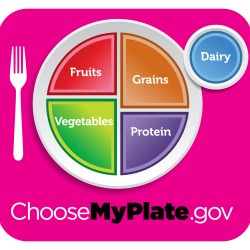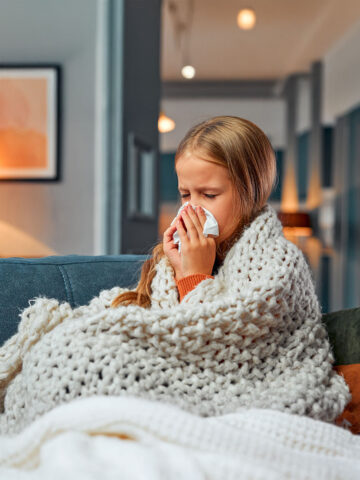Before you serve your next family dinner, you may want to consider using smaller plates, recommends the Academy of Pediatrics (AAP). In a recent study by the AAP, researchers found that first-grade students served themselves more and consumed almost 50 percent of the calories they served when using larger dishware, leading to greater energy intake at the meal. Children also served themselves more fruit, but did not serve themselves more vegetables when using larger dishes.
Authors conclude that encouraging parents to use smaller dishware at home can be an effective strategy in controlling age-appropriate portion size and intake during meals.
Another easy way to get your family’s food portions under control, is using the My Plate guidelines by the United States Department of Agriculture (USDA). Although there is a lot of nutrition information and resources out there, actually deciding how to balance your child’s diet or plate can feel daunting at times. The My Plate chart provides a fun, quick glance at how to divide your plate, to ensure you’re family is getting the proper nutrients to stay healthy.
Don’t forget these helpful tips when you’re eating out, too:
- Depending on your child’s age, order a “kid’s meal” or “small portion.” This includes beverages.
- For older kids, or yourself, if the main portions are larger than you want, try one of these strategies to keep from overeating: share a main dish with a friend, or when your food is delivered, set aside or pack half of it to go immediately.
- Start your meal with a salad packed with veggies to help control hunger and feel satisfied sooner. Ask for dressing to be served on the side, so you can use only as much as you want.
For more tips, including examples of foods for each section of your plate, portion sizes and more, please click here: https://www.choosemyplate.gov/food-groups/.





